Featured Products
In Part I of this series, I explained the basics of achieving a well-balanced night photograph to maintain detail in the important highlights and shadow areas. In this post, we are going one step further and discussing some techniques to embellish the night photo.
Adding color traffic blurs:
This technique requires a long exposure so the camera must be keep steady throughout. A steady tripod is the best means for doing this, although absent that you could rest it on something very steady, like the sidewalk. What we are going to do is extend the exposure time to blur the lights of passing traffic. How much time you need to cause the blur depends upon the amount of traffic and the speed of the vehicles. As a rule of thumb, you need enough time so that a vehicle can pass completely from one side of the frame to the other. That will result in a full light streak across the entire frame.
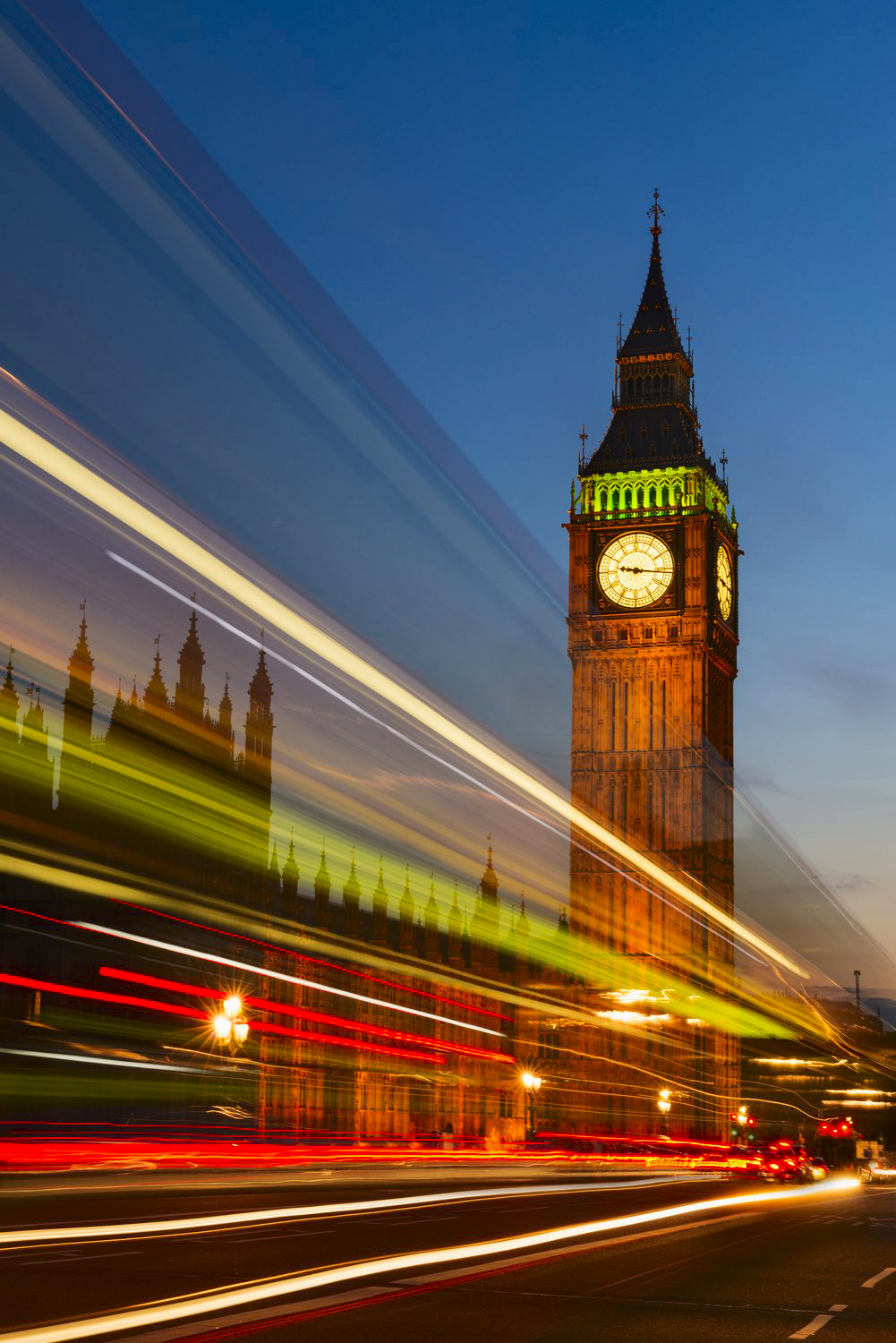
The height of the tripod off the ground will determine the placement of the blurred streaks. A low tripod will move the streaks up higher into the frame. In the sample above taken of Big Ben in London, the camera was placed quite low to the ground. This raised the streaks so they intersected with the background buildings. Waiting for taller traffic, like a bus, will also provide some streaks that are higher than the lower passing automobiles.
With a modern digital camera, it is easy to determine the best exposure time by trial-and-error. I find that an exposure of 3-10 seconds generally does the trick. The Big Ben photo above had an exposure of 3 seconds, whereas the one below of New York received a full 8 seconds of exposure time. This longer exposure time also caused some blurring in the fast-moving clouds.
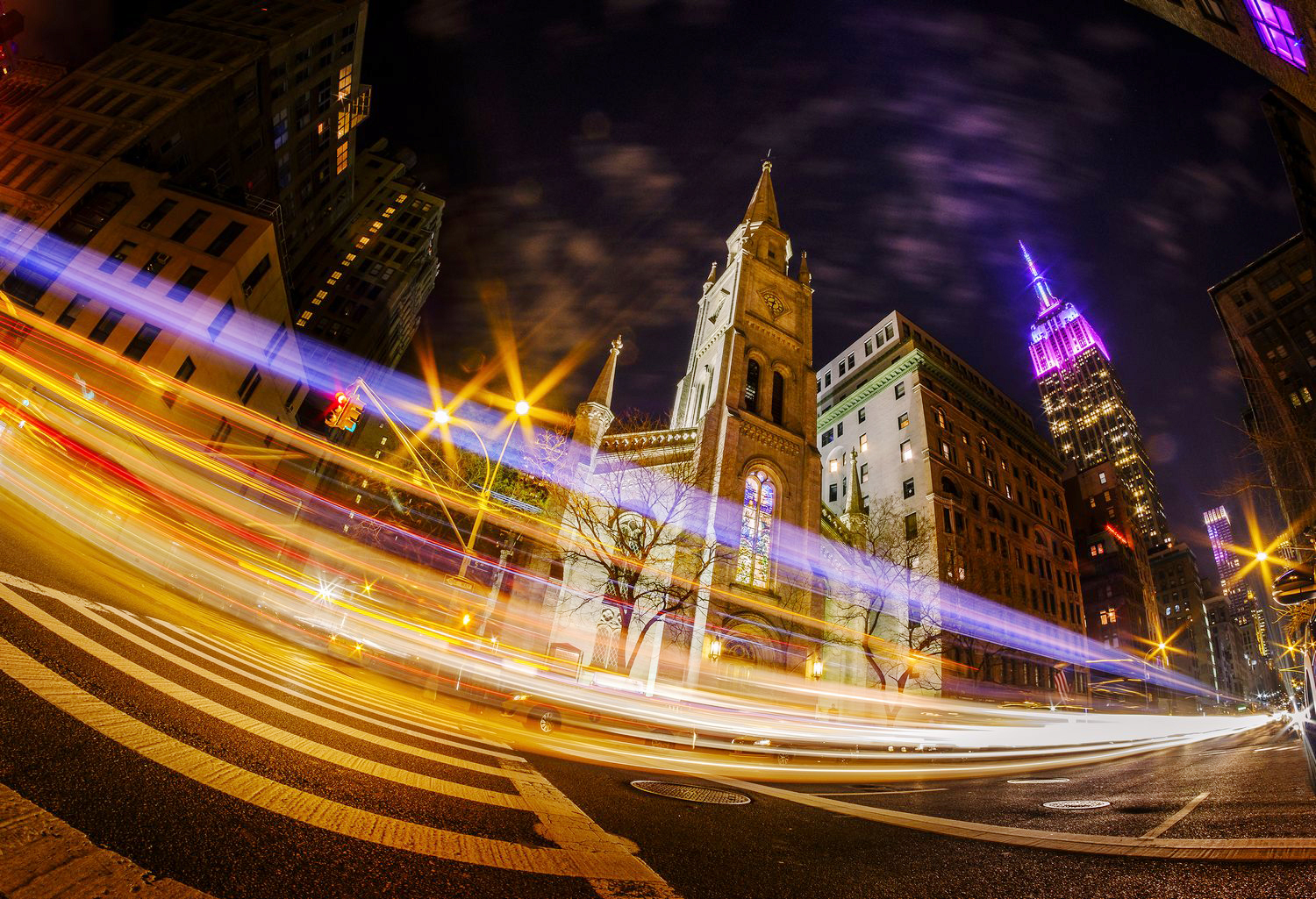
If you work in a post-processing program with layers, like Photoshop or Photoshop Elements, you can further enhance the blurs by combining light streaks from multiple images. In the photo above I had captured many images with different traffic patterns. By placing one image as a layer on top of my main scene and adding a layer mask filled with black, I could paint in some extra blurs using a white brush.
Painting in detail with a flash light:
The scene below from Joshua Tree National Park was taken towards the end of twilight when it was just dark enough to record the stars in the sky. There was a full moon coming up behind me and it added some light to the background scene. For the foreground tree on the right I used a small flashlight to paint the tree with light during the 13 second exposure. When photographing stars with one exposure, I try to keep my exposure under 15 seconds. Longer than that and the earth’s movement relative to the stars causes them to show up as tiny streaks instead of white dots. I find that you don’t really need a very powerful flashlight. The important thing is to keep it moving evenly over the object being painted with the light.
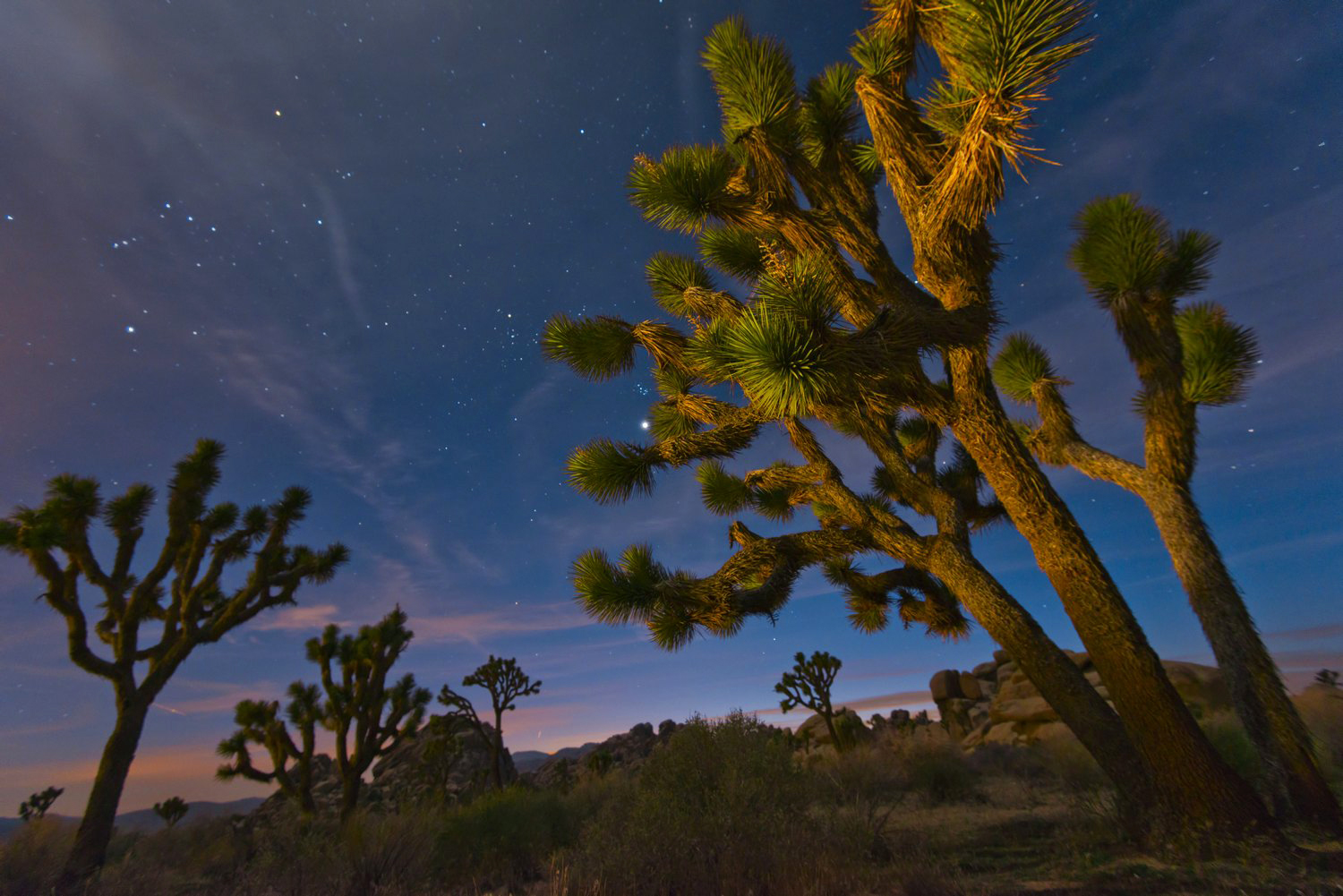
Using a flash at night:
One of my favorite techniques for night time photography in the snow is to use a flash to light the falling snow in the foreground. In a pinch, you could use the camera’s pop-up flash, but I find I have much more control by mounting a more powerful auxiliary camera flash on top of the camera. This gives me greater variety in my choices of exposure.
There will be some trial-and-error shooting to determine the best exposure setting for the background scene that balances with the flash exposure of the snow. I wanted the snowflakes to be large white balls so I needed a wide-open aperture to increase their blur size. I found that an aperture of f/2.8 gave me the look I wanted, and I adjusted the ISO and shutter speed the exposure for the background scene.
Next I needed to adjust the flash to light up the snowflakes just enough to balance them with the background light. I did this simply by varying the power of the flash. Balancing the exposures this way is possible because the flash has no exposure effect on the background scene, and the camera shutter speed only affects the exposure on the background and has no effect on the flash exposure.

Blurring moving water:
When taking night shots of cities or landscapes near moving water, you can add some interest to the photography by causing the water to blur into a milky flow. The photo below of Lower Manhattan from across the Hudson River was taken with an exposure of 30 seconds to blur the water into a smooth area that added color to the image by reflecting the city lights. The contrast of the static foreground wood break-water added interest to the composition by leading the eye in a zigzag path from foreground to background.
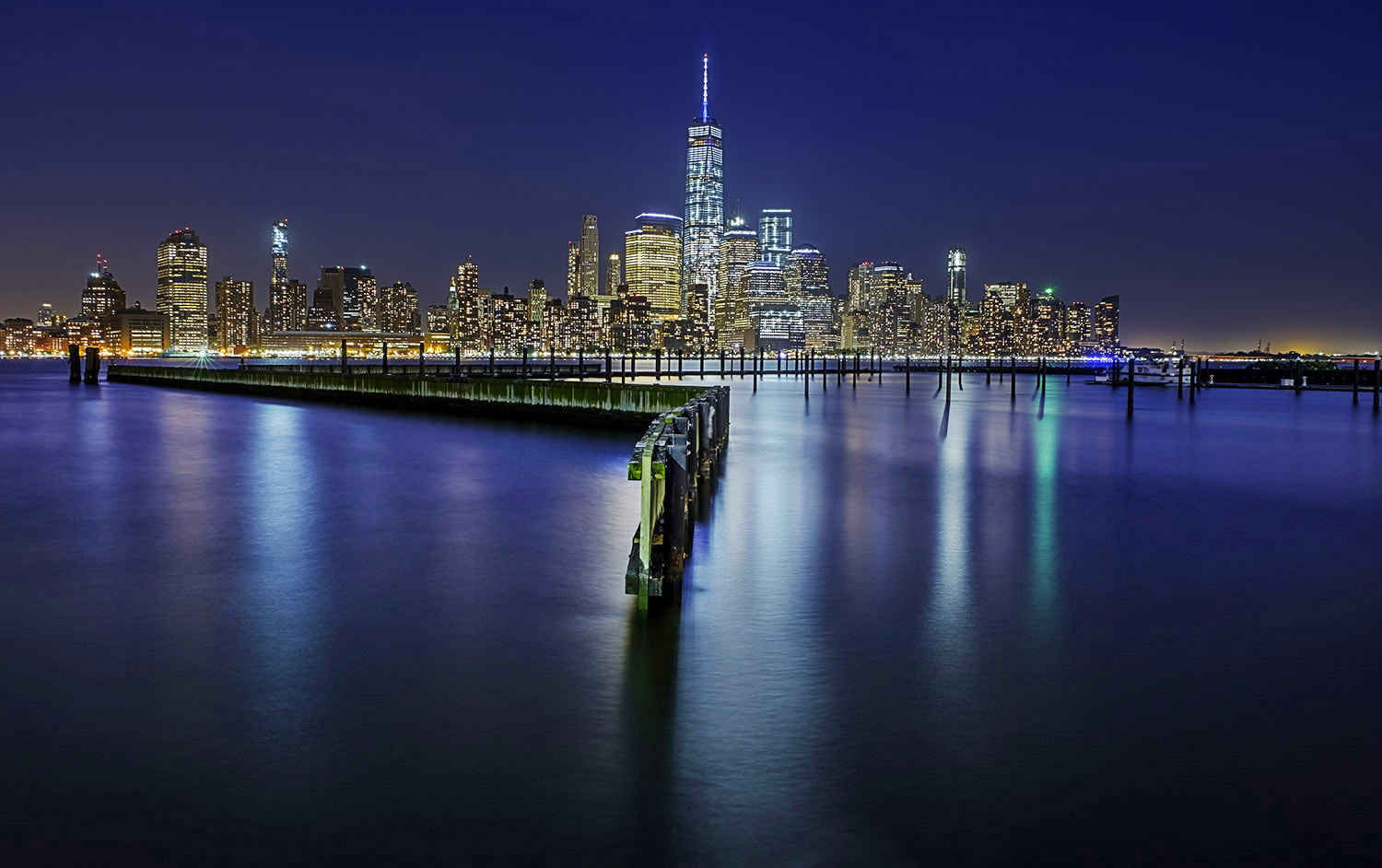
For Part III of this series on night photography, in my next post I will be covering more advanced multiple exposure techniques to cover the full dynamic range of a scene. I will also demonstrate how to increase the resolution of the scene making it possible to create large print files. Stay tuned right here at MCP Actions.
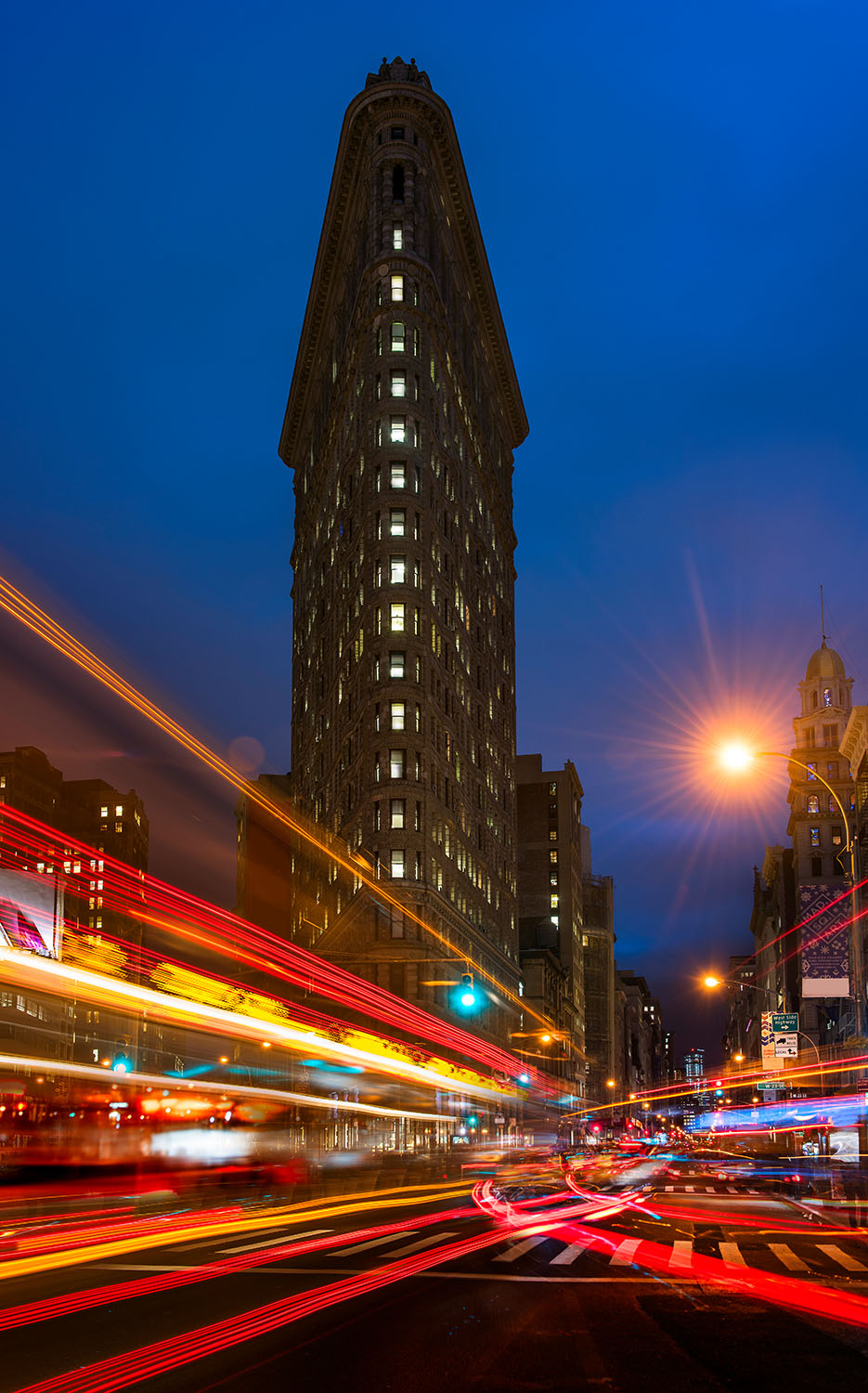
This night exposure of the Flatiron Building in New York was taken with a 3-second exposure and a low angle tripod to raise the light streaks up into the frame, very much the same way as the first photo of Big Ben.
No Comments
Leave a Comment
You must be logged in to post a comment.







































the one with the snowflakes is really incredible. It looks like a blizzard.